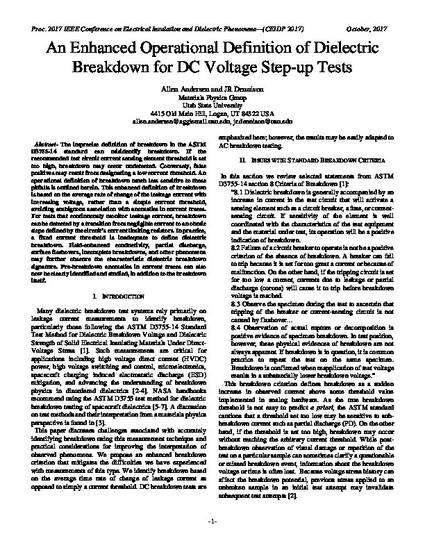
The imprecise definition of breakdown in the ASTM D3755-14 standard can misidentify breakdown. If the recommended test circuit current sensing element threshold is set too high, breakdown may occur undetected. Conversely, false positives may result from designating a low current threshold. An operational definition of breakdown much less sensitive to these pitfalls is outlined herein. This enhanced definition of breakdown is based on the average rate of change of the leakage current with increasing voltage, rather than a simple current threshold, avoiding ambiguous association with anomalies in current traces. For tests that continuously monitor leakage current, breakdown can be detected by a transition from negligible current to an ohmic slope defined by the circuit’s current limiting resistors. In practice, a fixed current threshold is inadequate to define dielectric breakdown. Field-enhanced conductivity, partial discharge, surface flashovers, incomplete breakdowns, and other phenomena may further obscure the characteristic dielectric breakdown signature. Pre-breakdown anomalies in current traces can also now be clearly identified and studied, in addition to the breakdown itself.
